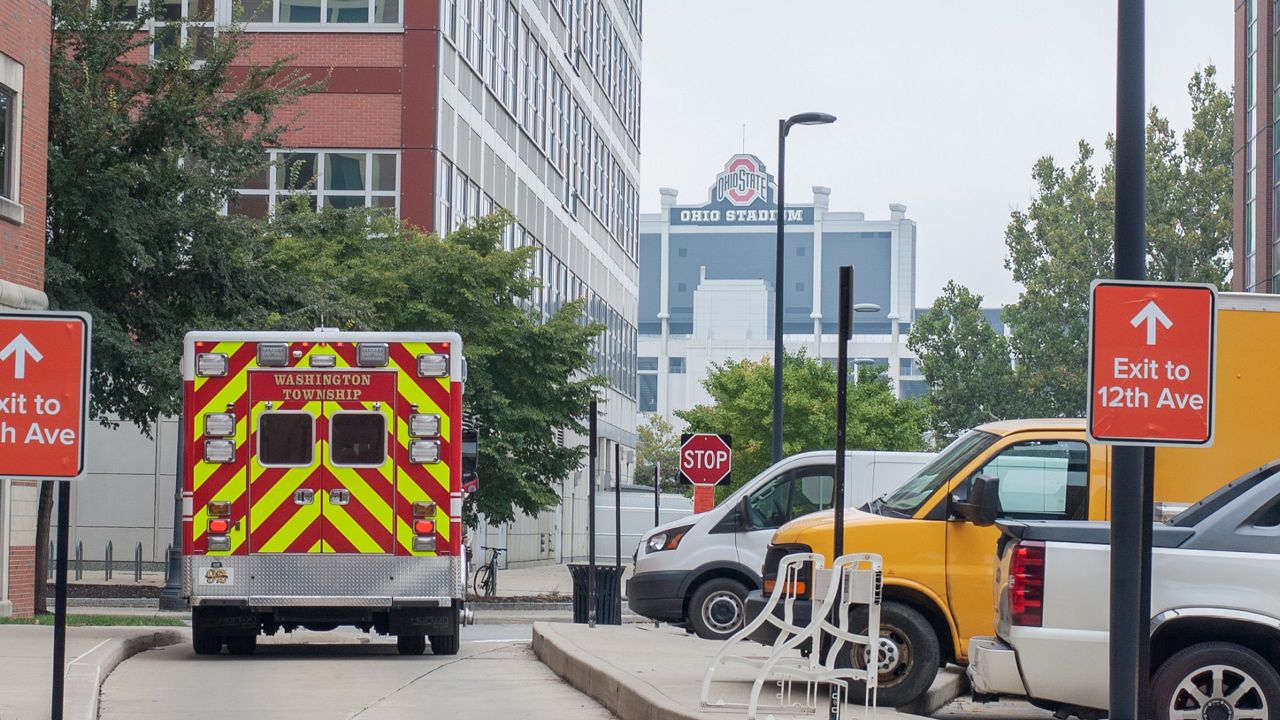COLUMBUS, Ohio — At least a dozen students at Ohio universities have suffered medical emergencies from COVID-19.
What You Need To Know
- Seven University of Dayton students have been hospitalized
- EMS have made five trips to Ohio State quarantine locations
- Miami University reported zero hospitalizations
Three colleges in Ohio have experienced coronavirus outbreaks with four-digit case numbers. The universities are now reporting daily case counts that are just a fraction of their peaks at the end of the summer, according to the schools’ online dashboards, which report cases but not hospitalizations.
Sonia Brickey, a junior, said it was surprising to learn students had suffered medical emergencies because she and her classmates are young and most students are not considered to be at high-risk of severe complications.
“It kind of put things into perspective,” she said. “When I hear that people are actually getting very sick, it's kind of scary.”
Brickey had just read that a student died of COVID-19 at her friend’s college, shaking news to learn, she said. A sophomore at Appalachian State University in North Carolina died last week after contracting the virus.
Information regarding the severity of students’ illnesses at Ohio’s college outbreaks is limited, and advocates for and against in-person learning present different assessments of the danger COVID-19 presents to college students who become infected.
On Tuesday, the dashboards showed 2,997 positive student tests at Ohio State, where the positivity rate is down to 0.8 percent, 1,754 positive cases at Miami University, 382 of which are active, and 1,288 cases at University of Dayton, including 42 active cases.
University of Dayton officials confirmed the university has recorded multiple hospitalizations but declined to share how many.
“Too many University faculty, staff and students have been touched by the coronavirus and have been affected with symptoms ranging from no to mild symptoms to hospitalizations,” a statement shared by a University spokesperson said. “We continue to pray for their recovery and return to health.”
According to the public health department for Dayton and Montgomery counties, seven University of Dayton students were hospitalized in the campus’s outbreak. A health department spokesperson said officials are pleased to see the decrease in new cases coming from the university.
At Ohio State, a Columbus Fire spokesperson said medics were sent three times to the school’s quarantine dorms and two more EMS runs were reported at the address of a hotel that the university used to quarantine students when its on-campus quarantine spaces filled. Further information was not available regarding those students’ hospital stays.
Spokespeople for Ohio State and Columbus Public Health could not comment on hospitalizations. For Ohio State students who quarantined in their off-campus residences or permanent residences, no information is available as to how many needed to go to the hospital.
Miami University, according to a spokesperson, has no reports of hospitalization.
A fourth college, Kent State, has experienced far lower occurrence of COVID-19, with the school reporting 125 cases, including 31 new cases for the most recent week. Kent State’s case count has drawn increased focus after Portage County, where the college is located briefly moved into the state’s “Red” zone due to the campus cases last month.
Interim Associate Provost Manfred van Dulmen, and the chair of Kent State’s reopening steering committee, said the university is combatting the virus with increased restrictions.
“Off campus parties were a factor in the increasing caseload,” he said. “Most of the activity we've had has been off campus. But more recently, we've all seen several related cases in the residence halls. And we’ve quarantined two areas in residences halls.”
In those two situations, 19 and 25 students were asked to quarantine by the health department. An additional 57 students are now in quarantine in two other dorm incidents, the health department said Monday.
The school asked students on Sept. 22 to avoid all parties and gatherings for two weeks or face disciplinary action. Students were instructed to limit their activities to going to classes, getting groceries, and physical activity. A university spokesperson said the guidance will be extended beyond the initial two-week period due to ongoing spread.
Kent City Health Commissioner Joan Seidel said it would be a violation of HIPAA to comment on whether hospitalizations have arisen from the school’s outbreak.
Kent State opted for a hybrid learning option this year, giving instructors a choice to teach their classes in-person or remotely. Students uncomfortable with in-person learning have remote options, van Dulmen said.
After Thanksgiving, classes will be held remotely for the remainder of the semester to avoid travel. Similarly, Kent State will postpone its spring break by two weeks, switching to virtual learning for the end of the spring term.
These changes are intended to reduce travel while still giving students a break before exams.



